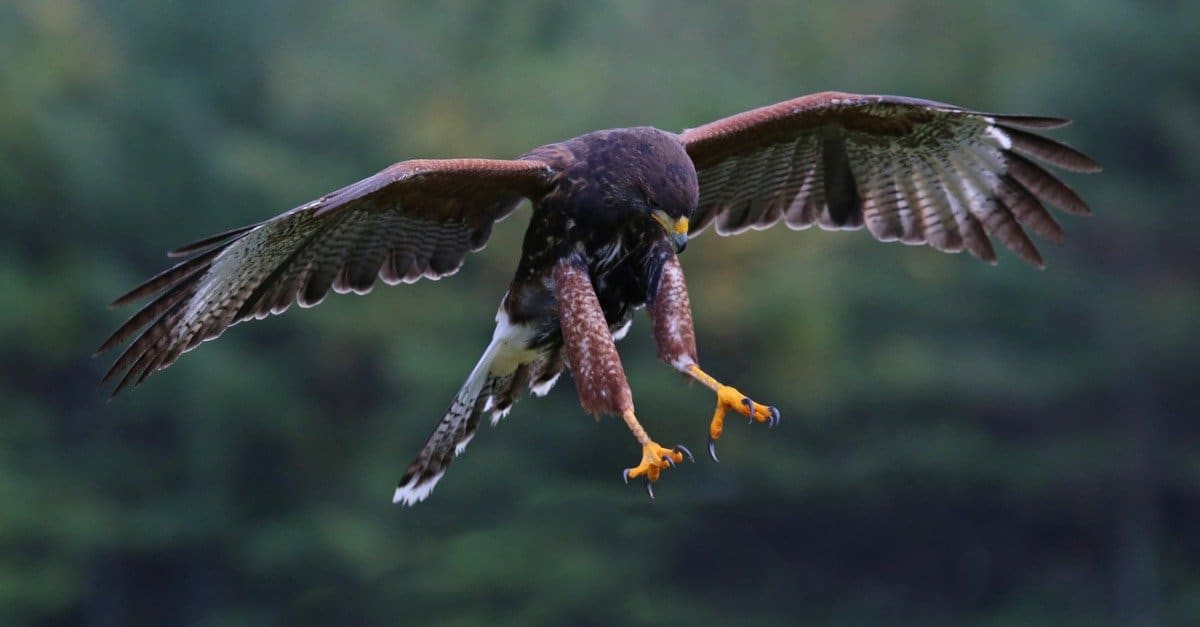The camera angles on this amazing clip are insane! We get to follow a little mouse as it is pursued into a hiding place by a team of hawks. One of them tries to flush the rodent out of its hiding place while the other gets ready to grab it. The giant talons of these birds are about the same size as the mouse’s entire body. The mouse makes a run for it and then tries to find shelter once more — inside a skull.
The way the bird peers in through the eye socket and reaches in with its talons is terrifying. Right at the end of the clip, it looks as if the hawk is distracted by another target so perhaps this little mouse got away with it after all?
Check Out the Stunning Footage Below
Which Birds Hunt in Packs?
Hawks belong to the raptor group of predator birds. Most raptors are solitary and hunt by themselves. Harris’s hawks are the exception. They hunt in groups of between two and six birds. Whilst this type of behavior is seen commonly amongst mammals, lions for example, it was only documented in birds during the 1980s. We now know that these hawks will work as an organized unit to track and hunt their prey. This behavior may be present amongst other bird species, but we have not observed it yet.
Working as a team, these hawks swoop at the prey from various directions which confuses it. If the prey takes cover, as we see in this clip, some of the birds will try to flush it out whilst the others wait to ambush it. It is thought that this behavior also enables the hawks to pursue bigger prey that they could tackle by themselves.

Harris’s hawks hunt in groups of two to six birds.
©iStock.com/Josiah S
Where Do Harris’s Hawks Normally Live?
Harris’s hawks are quite a common sight in the southwestern United States from Texas to the Arizona desert. Strictly speaking, their range extends further south to Chile. They like to live in semi-arid or desert habitats that contain plants including palo verde and cottonwoods. Having said that, they can also be spotted in cities and suburbs. This hawk is not a native species of Europe but because it is used in falconry you will find some individuals living there.
The birds are named after Edward Harris who was a naturalist enthusiast. There are three subspecies of this hawk. They are a large bird with a wingspan of up to 47 inches. As you can see in this clip, they have a hooked beak and huge talons that are perfect for catching prey.
Thank you for reading! Have some feedback for us? Contact the AZ Animals editorial team.








